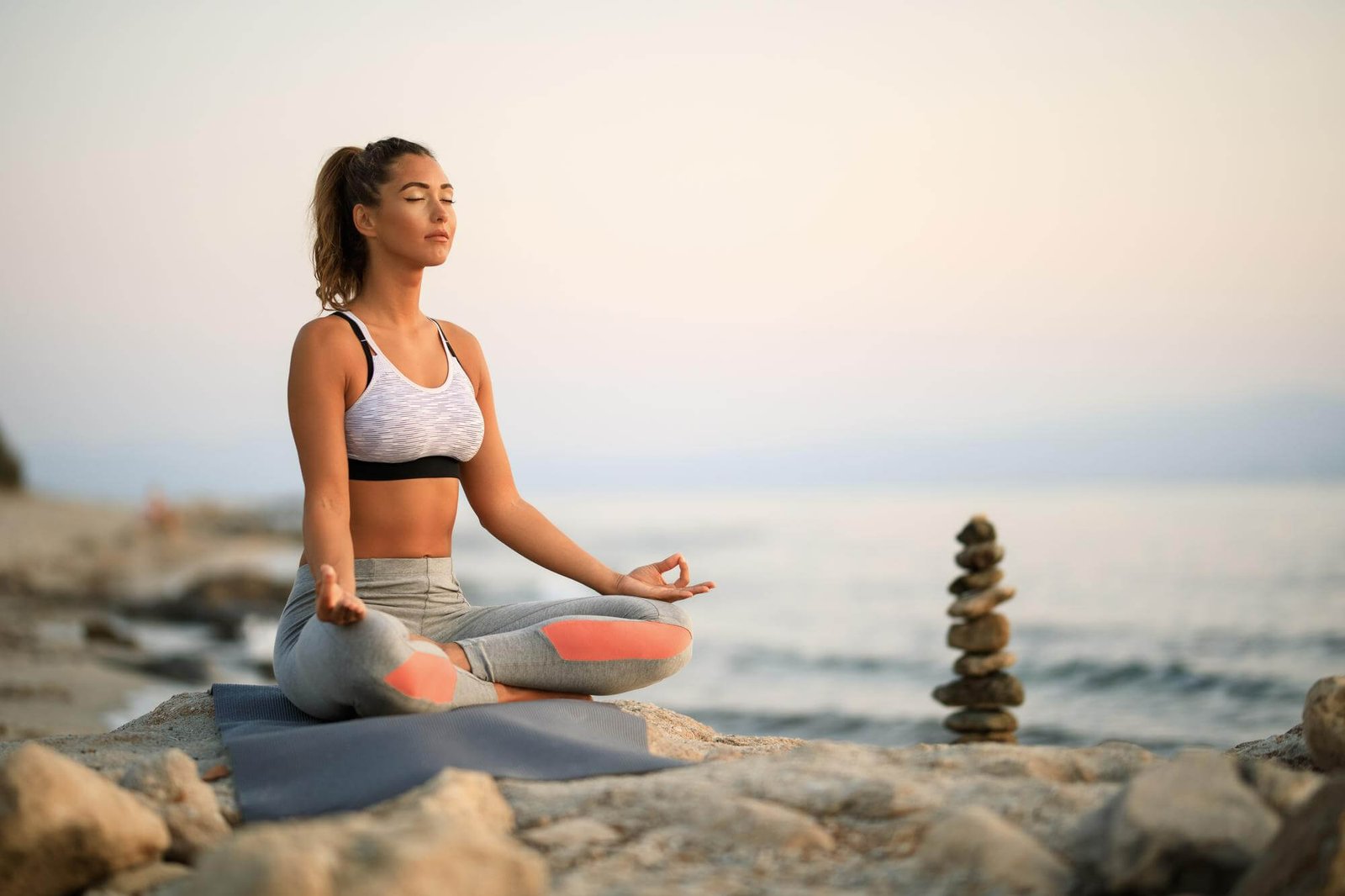- Blog
- Blog
Unlocking the Path to Overall Wellbeing: Embrace a Balanced Lifestyle

- 25 February 2024
- /MUKTYA
Introduction
Welcome to the journey of self-discovery and inner peace through the ancient practice of yoga. Whether you’re a complete novice or someone who has dabbled in yoga before, this beginner’s guide aims to provide you with valuable insights and clear explanations to help you embark on your yoga journey with confidence and mindfulness.
What is Yoga?
Yoga is a holistic practice originating from ancient India that encompasses physical postures (asanas), breathing exercises (pranayama), meditation, and ethical principles. It is not just a form of exercise but a way of life aimed at achieving harmony between the mind, body, and spirit.
Benefits of Yoga:
Before diving into the practice, let’s explore some of the numerous benefits yoga offers:
– Improved flexibility, strength, and balance
– Stress reduction and relaxation
– Enhanced mental clarity and focus
– Better sleep quality
– Increased self-awareness and mindfulness
– Overall sense of well-being and inner peace
Section 3: Getting Started:
Here are some tips to help you kickstart your yoga journey:
- Find a Suitable Class: Look for beginner-friendly classes at local yoga studios, community centers, or online platforms. Choose a style that resonates with you, such as Hatha, Vinyasa, or Yin yoga.
- Invest in Basic Equipment: You’ll need a yoga mat and comfortable clothing that allows for unrestricted movement. Props like blocks, straps, and bolsters can also be helpful for beginners.
- Start Slowly: Don’t feel pressured to master complex poses right away. Begin with simple asanas and gradually progress as you build strength and flexibility.
- Focus on Breath Awareness: Pay attention to your breath during yoga practice. Deep, mindful breathing helps calm the mind and deepen your practice.
- Listen to Your Body: Honor your body’s limitations and avoid pushing yourself too hard. Yoga is about self-acceptance and self-care, not competition or comparison.
Basic Yoga Poses for Beginners:
- Mountain Pose (Tadasana)
- Downward-Facing Dog (Adho Mukha Svanasana)
- Warrior I (Virabhadrasana I)
- Warrior II (Virabhadrasana II)
- Child’s Pose (Balasana)
- Cat-Cow Stretch (Marjaryasana-Bitilasana)
- Corpse Pose (Savasana)
Mindfulness and Meditation:
In addition to physical postures, yoga incorporates mindfulness and meditation practices to cultivate inner peace and mental clarity. Here’s a simple meditation technique to try:
– Find a comfortable seated position.
– Close your eyes and bring awareness to your breath.
– Notice the natural rhythm of inhalation and exhalation.
– Whenever your mind wanders, gently bring it back to the sensation of breathing.
– Start with 5-10 minutes and gradually increase the duration as you become more comfortable.
Incorporating Yoga into Daily Life:
Yoga is not just confined to the mat; it can be integrated into your daily routine to promote overall well-being. Here are some ways to incorporate yoga off the mat:8
– Practice mindfulness during everyday activities, such as eating, walking, or driving.
– Take short breaks throughout the day to stretch and breathe deeply.
– Cultivate gratitude through journaling or reflection.
– Surround yourself with positive influences and like-minded individuals who support your yoga journey.
– Be compassionate towards yourself and others, embracing the principles of ahimsa (non-harming) and satya (truthfulness).
Beyond the Basics: Exploring Advanced Practices:
Once you’ve established a consistent yoga practice, you may want to explore more advanced techniques and philosophies. Here are some avenues for further exploration:
– Advanced Asanas: Challenge yourself with more complex poses, under the guidance of experienced teachers.
– Pranayama: Dive deeper into breathing techniques to enhance your energy levels and mental focus.
– Meditation Retreats: Consider attending a meditation retreat to deepen your practice and immerse yourself in a supportive environment.
– Yoga Philosophy: Study the ancient texts and teachings of yoga to gain a deeper understanding of its philosophical foundations.
– Seva (Selfless Service): Explore opportunities to serve others through yoga outreach programs, charity events, or community service projects.
Maintaining Consistency and Adaptability:
As you progress on your yoga journey, remember to stay consistent in your practice while also remaining adaptable to life’s changes. Here are some tips for maintaining a sustainable yoga practice:
– Establish a regular routine that fits your lifestyle and commitments.
– Be open to exploring different styles of yoga and adapting your practice to suit your evolving needs.
– Listen to your body and modify poses as necessary to prevent injury and promote healing.
– Stay connected with a supportive community of fellow practitioners for encouragement and inspiration.
– Remember that yoga is a lifelong journey, and there is always room for growth and exploration.
The Importance of Patience and Self-Compassion:
In your yoga journey, it’s essential to cultivate patience and self-compassion. Progress may be slow at times, and setbacks are inevitable, but every step forward is a victory. Be kind to yourself, celebrate your achievements, and embrace the process with an open heart.
Conclusion:
Starting a yoga journey is a transformative experience that offers countless benefits for the mind, body, and spirit. Whether you’re seeking physical fitness, stress relief, or spiritual awakening, yoga has something to offer everyone. By embracing the principles of mindfulness, self-awareness, and compassion, you can cultivate inner peace and harmony in your life. So, roll out your mat, take a deep breath, and let the journey begin. Namaste.